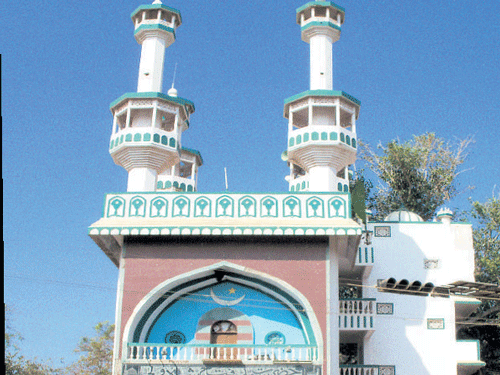The quaint city of Hubli has recently been renamed as Hubballi. This change actually has a meaning behind it – in Kannada, hu means flower and balli means a creeper. Hubballi has a thriving flower market and also a locality called Garden Peth.
The commercial capital of North Karnataka, Hubballi was once called as the “Bombay of North Karnataka” as well. Not many know of its rich past and interesting history. Under the Vijayanagar rulers, it was also known as Rayar Hubballi. Adil Shahis, Marathas, the Nawabs of Savanur and Tipu Sultan ruled the city at different periods of time.
Hubballi is also known for its beautiful dargahs – Sufi Islamic shrines. According to Ghazali, a renowned Islamic scholar and mystical thinker, Sufism is mainly
concerned with devotion to God and loving the people. He believed whoever had these qualities was a Sufi. Tracing the history of Sufism, Reuben Levi rightly says, “It is a system of theosophic mysticism which began converts in Persia soon after the Islamic conquest. Its earliest exponents were Persians themselves, Arabs and ascetics who wore rough garments of wool.”
Among the Muslim saints of Hubballi, Sayyed Fateh Shah Wali is well-known. It is said that Tipu Sultan during his campaign against the Savanur Nawab, visited Hubballi in 1780. When he came to know that many miracles were associated with a dargah situated in Old Hubli, he visited the shrine to pay his respects. To commemorate his victory and to show his reverence, he called the dargah, Sayyed Fateh Shah Wali. A giant gate at the tomb welcomes all the visitors. A few decades back, it had a vast natural tank. Because of its muddy water, it was also called Lal Talab (red tank). Sadly, you can’t find this tank today.
There’s another interesting story that revolves around a bald Muslim saint and the Indian Railways. The British had started the Railway Workshop in 1880. Before that, the railway lines were being laid out by the British engineers and the local workers. During one of their unsuccessful attempts to lay the track, they noticed a saint’ grave nearby. As a mark of respect to him, they not only left the grave untouched but also granted land for
constructing a tomb. This beautiful dargah was named after the bald saint – Bodke Shah Wali and can be found in the vicinity of Hubballi Railway Station.
The aasar was constructed by Mohammed Adil Shah in 1646, where two hair strands of Prophet Muhammad are enshrined in a casket. During the Eid-e-Milad (Prophet Muhammed’s birthday) they are displayed to the public and a fair is held for two days for both men and women.
There are several other notable Sufi dargahs in Hubballi like the ones of Hazrat Noor Mohammed Shah Qadri, Hazrat Ghaib Shah, Hazrat Muhiuddin Deevan, Hazrat Sayyed Sadat and so on. In the earlier days, every street had a dargah and people of every religion participated in the death anniversaries (urs) of the saints.
Today, in spite of changing political scenarios, these dargahs continue to promote communal harmony.
